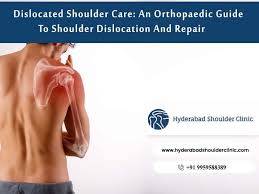Fractures and Dislocations
Fractures are breaks in bones, and dislocations occur when bones are forced out of their normal positions in joints. Both injuries commonly result from trauma and can cause significant pain, disability, and complications if not treated promptly.
---
20 Causes of Fractures and Dislocations
1. Falls: Falling from a height or slipping on a wet surface can cause fractures or dislocations.
2. Sports Injuries: Contact sports (football, basketball) or high-impact activities (skateboarding) can result in fractures or dislocations.
3. Motor Vehicle Accidents: High-speed collisions often result in broken bones and dislocations.
4. Direct Blows: A direct hit to a body part, such as in a fight or sports, can fracture bones or dislocate joints.
5. Osteoporosis: Weak bones due to osteoporosis are more likely to break, even with minor stress.
6. Repetitive Stress: Repeated movements over time can cause stress fractures, particularly in athletes.
7. Trauma from Heavy Objects: A heavy object falling on a limb can cause a fracture or dislocation.
8. Twisting Injuries: Excessive twisting motions, especially during sports, can lead to fractures and dislocations.
9. Weak Bones from Illness: Conditions like cancer, Paget’s disease, or other bone disorders can weaken bones.
10. Workplace Accidents: Falling from ladders, scaffolds, or other accidents in industrial settings.
11. Bicycle Accidents: Falls or collisions while cycling can lead to fractures and dislocations.
12. Childhood Injuries: Active children often experience falls or sports-related fractures.
13. Physical Assault: A violent impact or blow during an assault can fracture bones or dislocate joints.
14. Carrying Heavy Loads: Lifting heavy objects with improper techniques can lead to bone or joint injury.
15. High-Impact Trauma: Explosions, gunshot wounds, or falls from significant heights.
16. Joint Hyperextension: Overextending a joint can cause dislocations, especially in hypermobile individuals.
17. Seizures: Severe muscle contractions during seizures can cause fractures, especially in the arms.
18. Childbirth: In rare cases, the stress of childbirth can cause pelvic fractures.
19. Brittle Bone Disease (Osteogenesis Imperfecta): Genetic disorders that make bones more prone to fractures.
20. Overuse in Athletes: Prolonged, repetitive motion, such as running or jumping, can cause stress fractures.
---
20 Signs and Symptoms of Fractures and Dislocations
1. Severe Pain: Immediate and intense pain at the injury site.
2. Swelling: Inflammation around the affected area, often accompanied by heat.
3. Bruising: Discoloration around the injury, which may become apparent hours after the trauma.
4. Deformity: A visibly out-of-place bone or joint.
5. Loss of Function: Inability to move the affected limb or joint.
6. Limited Range of Motion: Restricted movement due to pain or structural damage.
7. Numbness or Tingling: Nerve involvement causing altered sensation around the injury.
8. Bone Protrusion: In open fractures, the bone may protrude through the skin.
9. Crepitus: A crackling or grinding sound when moving the affected area.
10. Muscle Spasms: Muscle contractions near the site of the injury, adding to discomfort.
11. Joint Instability: Feeling that a joint is "loose" or unstable after a dislocation.
12. Visible Lumps: A visible lump or bump where the bone is fractured or dislocated.
13. Tenderness: Pain when touching the affected area.
14. Inability to Bear Weight: Difficulty standing or walking if the lower limb is injured.
15. Shock Symptoms: Dizziness, fainting, or sweating may occur due to the injury.
16. Fever: In cases of open fractures or prolonged injuries, fever can indicate infection.
17. Dislocated Joint: The joint appears out of place and does not function normally.
18. Bone Instability: The bone feels unstable or wobbly when touched.
19. Skin Discoloration: The skin may turn pale or bluish in the area around the injury due to poor circulation.
20. Weakness: Weakness in the injured limb due to structural damage or muscle strain.
---
10 Effects of Fractures and Dislocations
1. Chronic Pain: Lingering pain at the injury site, particularly if the injury was severe or improperly treated.
2. Loss of Mobility: Reduced range of motion in the affected joint or limb, limiting activities.
3. Deformity: Permanent deformities in the bone or joint if not treated correctly.
4. Arthritis: Increased risk of developing arthritis in the affected joint due to damage.
5. Infection: Open fractures can lead to infections if the wound is exposed to bacteria.
6. Delayed Healing: Prolonged healing times in severe fractures or dislocations, especially if complications arise.
7. Muscle Atrophy: Loss of muscle mass around the injured area due to immobility during recovery.
8. Blood Clots: The risk of developing blood clots, particularly in lower limb injuries, due to limited mobility.
9. Nerve Damage: Permanent nerve damage can result from fractures or dislocations, causing numbness or weakness.
10. Recurrent Dislocations: Once a joint is dislocated, it may become more prone to future dislocations.
---
Prevention of Fractures and Dislocations
1. Strengthening Exercises: Regular exercise to strengthen muscles and bones, improving stability.
2. Use Protective Gear: Wearing helmets, wrist guards, and knee pads during sports or high-risk activities.
3. Fall Prevention: Use handrails, ensure adequate lighting, and avoid slippery surfaces to reduce fall risk.
4. Proper Lifting Techniques: Use your legs instead of your back when lifting heavy objects to avoid strain.
5. Balanced Diet: Ensure adequate intake of calcium and vitamin D to maintain bone health.
6. Avoid Overuse: Rest between periods of intense physical activity to prevent stress fractures.
7. Footwear: Wear shoes with proper arch support and non-slip soles to prevent falls.
8. Bone Density Tests: Regular screenings for bone density, especially in older adults, to prevent osteoporosis.
9. Stretching and Warm-Up: Perform warm-up exercises before engaging in physical activities to prevent muscle and joint injuries.


